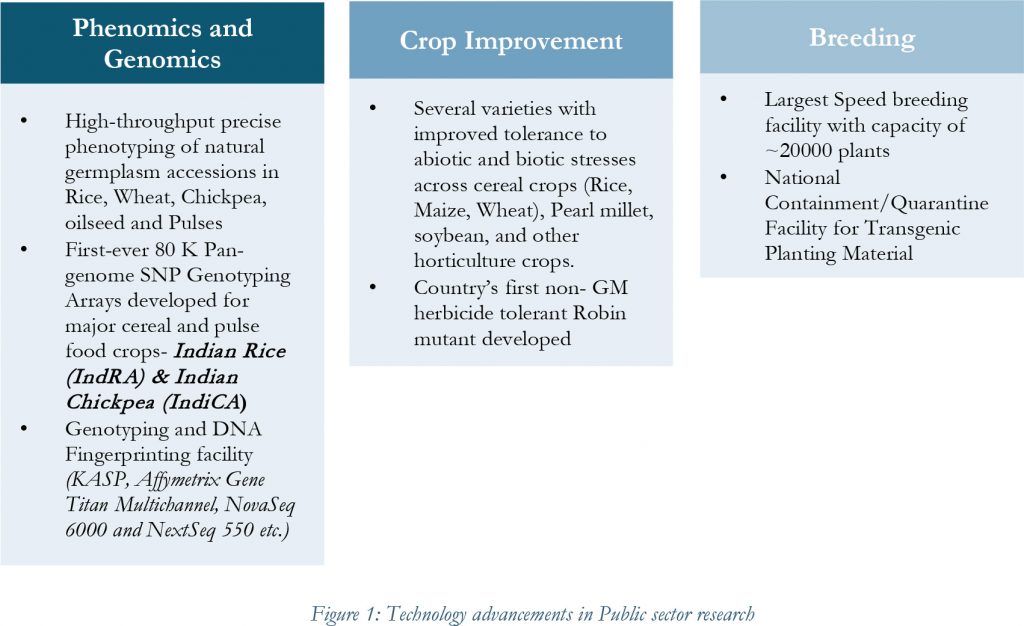
Technological advancements in Public sector research driving improvements in Agriculture
Agricultural research by the public sector is critical in eliminating poverty worldwide by providing low-cost and high-quality seeds to resource-poor farmers. R&D capacity is an essential factor in harnessing new technological pathways for increasing agricultural productivity, building food security, and contributing to the economic stability of agriculture-based economies. Unlike the public sector, private investment priorities are driven by market factors and may not support national interest to the same degree as public research.
Public sector research and technology transfer are necessary when private firms cannot recover the research, technology transfer, and marketing costs. Integrating novel technologies into public crop breeding programs can positively increase the agricultural productivity of the crops not pursued by the private sector. There is also a need to establish industry-wide standards and shared protocols for integrating new technologies into the research programs. Public research organizations have taken up several cutting-edge technological initiatives in crop genomics, computational biology, transgenics, improved crop varieties, etc., that can accelerate research and development programs (Figure 1).

Technological developments and the fast pace of change in the private sector is creating increasing pressure on the public sector to increase the efficiency and effectiveness of public service delivery. Tremendous value has been unlocked by the acceleration in the broader adoption of new technologies. Research platforms such as State of the Art advanced proteomics and metabolomics platforms, plant transformation platforms, translational facilities, and the Chips will steer agriculture biotechnology research and harness the vast germplasm resources of the country. The research programs in the public sector have experienced a paradigm shift over the years to address the evolving needs of the farmers, consumers, and export markets and deliver custom solutions in the form of improved varieties/technologies/products, capacity building, infrastructure creation, and knowledge generation. For instance, improved Pusa Basmati rice varieties (1728, 1718, CARI Dhan 6 and 7) are grown in nearly 10% of the Basmati growing region in Punjab, Haryana, and West UP, and almost 15 licenses were given to seed companies for seed production of these varieties and a soybean variety (NRC 127) also got commercialized through a company[1].
Owing to the unique strengths and weaknesses of the public and private sectors and a favorable intellectual property regime, it is possible to harness the synergy of public and private sectors by complementing the strengths of each other through their partnerships. Public-Private Partnership is the best option for utilizing the large facilities created in the public-sector institutions. PPPs offer a number of prospective benefits stemming from the operational and economic efficiency of the private sector with the public sector’s role as the creator of an enabling environment and regulator to ensure that national interests are strategically accomplished.
Strengthening and nurturing a robust innovation-driven research ecosystem across research institutes and laboratories engaging startups and small and large scale industries will drive translational and foundational research in India in alignment with global standards. Academic research institutes, commercial bodies and the Government, must work together, to identify the roles, responsibilities and funding that build resilience into public sector applied crop research programmes.
[1] Success stories Agriculture Biotechnology
Author

Connect with Author at: E-mail agribusiness@sathguru.com
 Grow Beyond
Grow Beyond 

